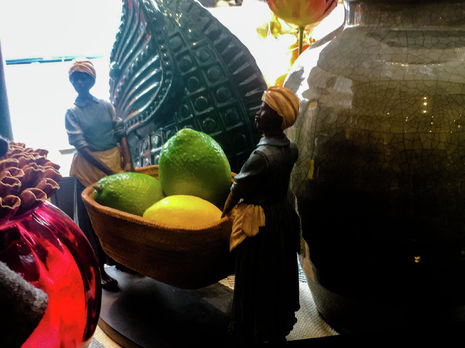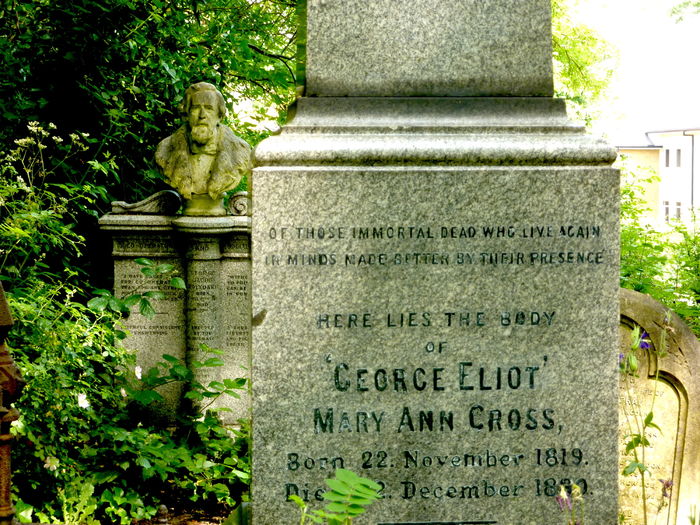Racist Porcelain: The Trend of the “Blackamoor” in Europe
Emily Symington looks at different ways of dealing with the colonialist ‘novelty’ items
The Fitzwilliam Museum in Cambridge, along with many other museums and private collections in Europe, is home to a large collection of 18th and 19th century “blackamoor” porcelain: small porcelain statuettes of black figures. A recent complaint made by visiting students that these statues were offensive resulted in the removal of one of these blackamoor figurines from display in the Fitzwilliam.
Hugely popular from the 16th to the 19th century, “blackamoor” style featured stylised African figures and was widespread in sculpture, jewellery and furniture. Today we see the racism behind the trend for the blackamoor, that the schematic appearance of the figures is perpetuating racist tropes and romanticising the treatment of slaves and life in the colonies.
Painted in glossy black glaze and decked out in brightly coloured feathered costumes, the porcelain figures in the Fitzwilliam would have functioned as a palatable form of exoticism for their white European owners, mimicking the theatrically dressed black servants and slaves that were part of European noble houses. However, these exquisitely modelled black figures have also been read as a nod to the colonial triumph of Europe. These porcelain figurines often adjoined sugar bowls. This link with sugar is particularly disturbing given the use of black slave labour on the sugar plantations of Early Modern Europeans. Art historian Adrienne Childs recently criticised the perverseness of such romanticised depictions, arguing that these quaint depictions of labouring slaves and sugar bowls served to obscure and make palatable the brutality of the life of slaves in the colonies. Childs grimly asserts that these statues must not be seen as “benign frivolous appointments, but evidence of a culture that marginalised and dominated blacks” (‘Sugarboxes and Blackamoors: Ornamental Blackness in Early Meissen Porcelain’, Adrienne L. Childs) Indeed, the presence of these figures in a British museum, such as the Fitzwilliam, is a stark reminder that this is a culture whose history and prosperity was built on the systemic oppression of black people.
Though such context may not have been obvious to the students who came across some of these figures in the Fitzwilliam Museum, it is easy to see why they found them offensive. Looking at these figures today makes for uncomfortable viewing. The statues draw on racist tropes associated with blackness: large wide eyes and mouths that recall caricatures of black people and other racist memorabilia that was in favour among white Europeans and Americans until well into the 20th century. Moreover, the costumes of these figures purport the popular trend of European fetishization of “exotic” appearances. Edward Said’s polemic book Orientalism (1978) criticised the dominant Western portrayal of the Eastern world as a place of “romance and exotic beings” (Said, 1978), and these figures with exaggerated black skin, who are scantily clad in feathered costumes, are borne of this narrative.
Much like the recent controversy surrounding the removal of statues like that of the slave trader Colston in Bristol, the display, or lack thereof, of these offensive figurines, is a challenge among museum curators. When I spoke to Helen Ritchie, Curator of Applied Arts at the Fitzwilliam, she was emphatic that the one or two pieces of “blackamoor” porcelain removed from display temporarily and now sitting in the bowels of the Fitzwilliam were not being “hidden away” and that the museum is in the process of thinking how best to contextualise these objects.
Creative modes of display have been effective for engaging with offensive and racist art. ‘Resignifications’, an exhibition in the Florentine Villa La Pietra in 2015, featured 45 contemporary artists from Asia, Africa, the Americas and Europe, who were asked to respond to the 36 “blackamoor” statues and artefacts that reside within the collections of the villa. Artists interacted with the blackamoor objects to create provocative work, offering counter narratives to the original context of the “blackamoors”, whilst simultaneously shedding light on contemporary issues surrounding race. One artist posed naked with a blackamoor mask, another photographed blackamoor statuettes to examine the “postures of servitude” in which the black body is portrayed in European art. The Senegalese photographer Omar Victor Diop recreated a series of 17th and 18th century portraits of African diaspora, replacing their period costume with modern football kits; the aim is to shed light on contemporary issues of immigration, as well as commenting on racism within American football culture.
Similarly, the Jim Crow Museum of Racist Memorabilia in Michigan takes the approach that racist art can be used for educational purposes; on their websites it reads “Using objects of intolerance to teach tolerance and promote social justice”.

However, the fashion for the “blackamoor” is not a thing of the past. Porcelain figures like the ones in the Fitzwilliam are popular collectors’ items, fetching large prices at Christie’s auctions. Every so often, in houses, you may spot polished candleholders clutched by turbaned figures. In 2017, the Duchess of Kent was criticised for wearing a blackamoor brooch at a lunch attended by the Duchess of Sussex, Meghan Markle. Dolce and Gabbana caused outrage after using blackamoor motifs in their Spring 2013 collection, worn by all white models.
Moreover, modern versions of the blackamoor are still being made today. I once walked into an interiors shop in Hampshire to find a featured range of modern day versions of blackamoor objects: a small black figure attached to a bowl, two turbaned women lifting a basket of fruit. Shocked, I asked the shop owner why they sold these. She shrugged her shoulders and said “They sell really well”.
This article was updated on the 22/09/2020 to make clear the exact title of Helen Ritchie and to clarify the number of porcelain pieces removed from display temporarily.
 News / Local business in trademark battle with Uni over use of ‘Cambridge’17 January 2026
News / Local business in trademark battle with Uni over use of ‘Cambridge’17 January 2026 Comment / The (Dys)functions of student politics at Cambridge19 January 2026
Comment / The (Dys)functions of student politics at Cambridge19 January 2026 News / Cambridge bus strikes continue into new year16 January 2026
News / Cambridge bus strikes continue into new year16 January 2026 Features / Exploring Cambridge’s past, present, and future18 January 2026
Features / Exploring Cambridge’s past, present, and future18 January 2026 Comment / Fine, you’re more stressed than I am – you win?18 January 2026
Comment / Fine, you’re more stressed than I am – you win?18 January 2026









